It’s the holidays, and that means parties and good food. Let’s face it, we all want to impress our friends and family with our amazing skills in the kitchen and on the grill. Nothing is more impressive than Prime Rib. Relatives you haven’t seen in years will arrive promptly for Christmas dinner if word gets out that Prime Rib is on the menu!
Well, this year we did something we always dreamed of doing at the ThermoWorks demo kitchen—we smoked our Prime Rib. Was it good? Let’s just put it this way, properly prepared Prime Rib alone is spectacular; but smoked Prime Rib is something you have to taste to believe.
Prime Rib is not a cheap cut of beef to play around with. You’ll have to invest a little in this cut of meat, but it will more than pay you back. And with the right tools (like Smoke X2®) and a few key temperatures firmly in mind, you can feel confident smoking your holiday meal this year.
J. Kenji López-Alt of SeriousEats.com has put together the three commandments of Prime Rib Perfection. We agree completely and thought we would pass on these words of wisdom.
Commandment I:
The Perfect Prime Rib must have a deep brown, crisp, crackly, salty exterior crust.
Commandment II:
The gradient at the interface between the brown crust and the perfectly medium-rare interior must be absolutely minimized (as in, I don’t want a layer of overcooked meat around the edges).
Commandment III:
The Perfect Prime Rib must retain as many juices as possible.
J. Kenji López-Alt, The Food Lab, pg. 630
Let us teach you how to keep these commandments while preparing your Prime Rib.
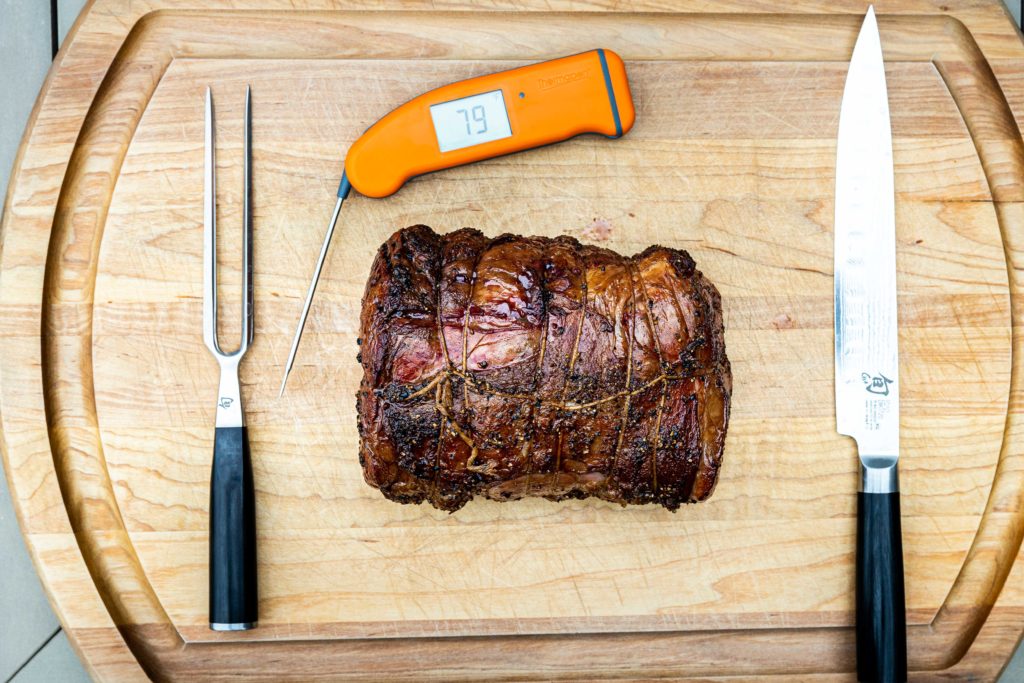
How to Smoke Prime Rib: 8 Simple Steps
What You Will Need:
- 1 Prime Rib Roast 7-15lbs, depending on the size of your party (ours came from E3 Meat Co.)
- Kosher salt
- Black pepper
- Montreal steak seasoning or your favorite BBQ rub (optional)
- Cotton kitchen twine
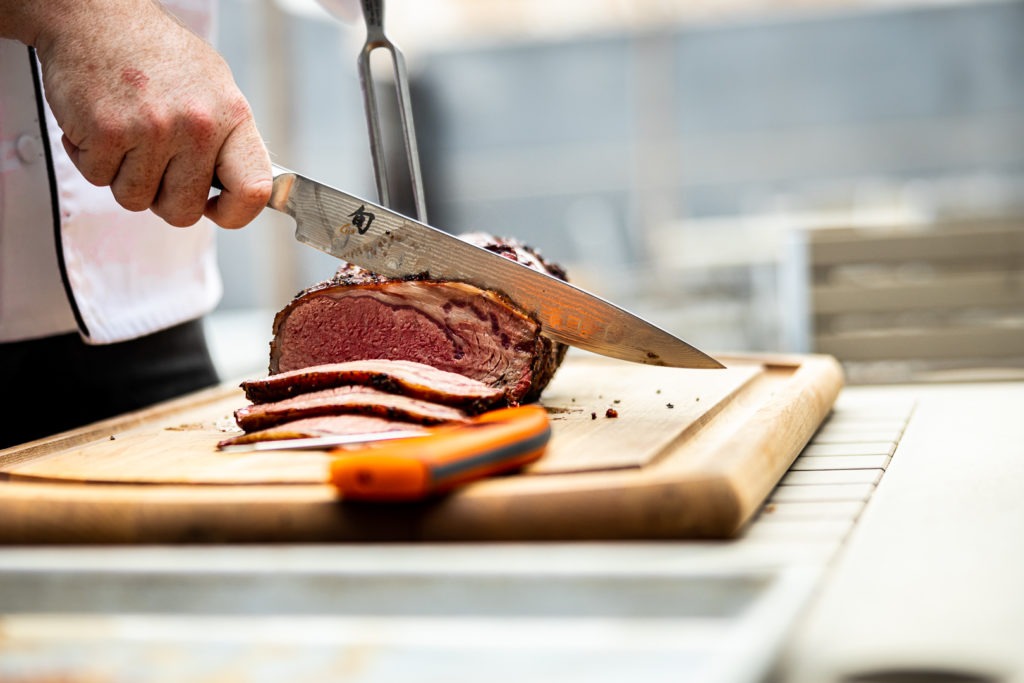
Step 1: Tie Your Prime Rib
First, you will want to tie your rib roast. This will pull everything together into a uniform shape and density for a nice even cook. Tying also helps you keep commandment number three, which is to retain as many juices as possible. When you don’t tie your Prime Rib Roast, the meat can separate, allowing for an uneven cook and juices to spill out.
- Cut off the “lip” or the roast so that it more closely resembles a cylinder.
- Wrap the twine around the roast, and loop it through itself every 1 ½ to 2 inches, creating tight wraps down the length of the roast. Finish by wrapping the roast lengthwise and tying another secure knot. Snip off the excess twine.
(If you’re going to skip a step, this is the one! The others will have a bigger impact than this will. If you don’t tie it up, it’s best to have it with the bones still on.)
Step 2: Season Your Prime Rib
You will want to season your roast heavily. A prime rib roast is a large piece of beef and therefore needs a great deal of seasoning to penetrate the meat. The seasoning will also help us with commandment number one: it will help you get a crisp, crackly, salty crust. The crust may be the best part of the whole prime rib! Plenty of salt and pepper will do, some Montreal seasoning is great, but you don’t want to cover the delisious beefiness of the prime rib.
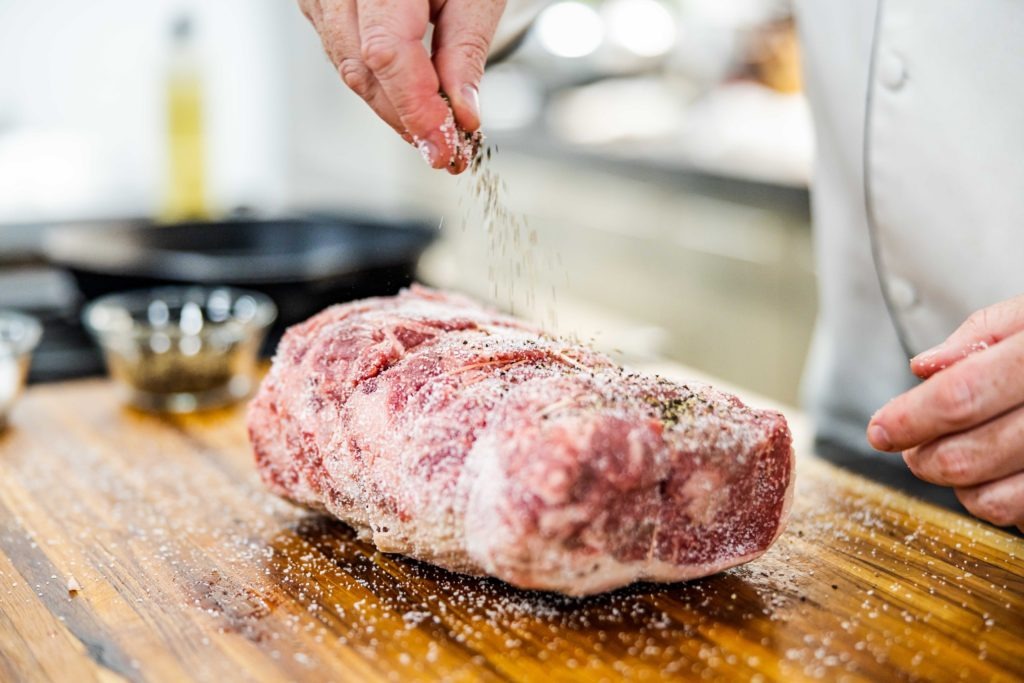
Step 3: Refrigerate the Prime Rib Overnight
• After your meat is seasoned with the rub mixture, we suggest letting it sit in the fridge overnight. The salt in the rub will draw out some moisture and end up dissolving in the meat. During this time the salty liquid will molecularly alter some meat proteins, loosening its structure, allowing your meat to become better seasoned and able to retain juices during the cook.
Step 4: Sear your Roast
Searing a rib roast is essential. Without the sear, there’s no deep meatiness, no high-flavor edge to the dish. Not even the addition of smoke can redeem a medium-rare rib roast that has not been seared. Do not skip this step.
That being said, when you sear it is kind of up to you.
In the research we conducted leading up to our article How to Cook Prime Rib: The Science of Perfection, we found that the best results came from an initial sear, followed by a low-temp roasting. This provided a measurably smaller grey ring in the meat.
But…if your smoker doubles as a grill? Well, searing after the smoke and doing it over direct heat on a grill so that you get fire flavor as well as smoke starts to sound very nice. If you opt for this (as we did in the video linked above), let the rib roast rest, or even chill, while you bring the smoker up from smoking temp to searing temp. Letting the surface cool while the temp comes up in the grill will help prevent overcooking and that unsightly grey band.
Step 5: Thermometer Probe Placement
An accurate leave-in probe thermometer can help make sure you hit your temperatures and get the results you want! While your smoker is heating up, it’s time to place the thermometer probes. We’re using the Smoke™ 2-channel thermometer to monitor both the temperature of the smoker and the temperature of our roast.
- The penetration probe in the center of the prime rib will let us know when to pull the meat from the heat.
- The air probe, attached with the grate clip, tracks the ambient temperature in the smoker surrounding the meat so we can respond to spikes or drops in temperature.
Place the penetration probe in the very center of the rib roast, entering from one of the ends of the cylinder. You want the probe in the thermal center of the meat, the spot furthest from any surfaces.
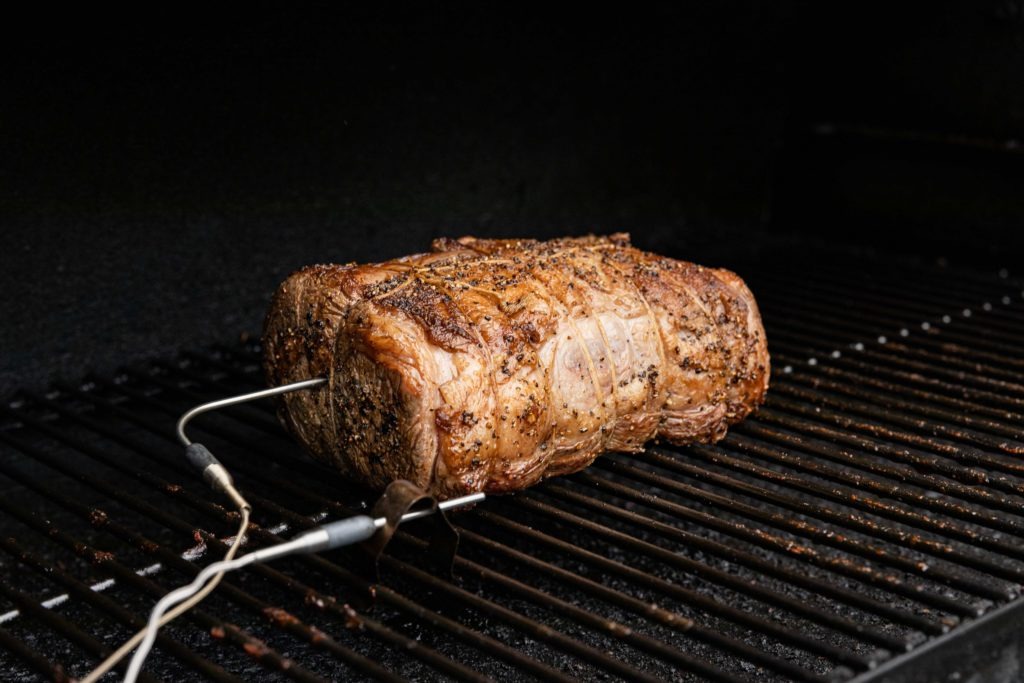
Step 6: Smoke Your Prime Rib Nice and Slow!
To avoid the overdone gray outside of the roast, and to get a nice deep smoke flavor, you will want to smoke your Prime Rib at a low temperature. We suggest your smoking temperature be set between 225 and 250°F (107 and 121°C). This method of cooking it low and slow will help the interior of your roast to look like something out of Bon Appetit magazine and give it a flavor unlike anything you’ve ever tasted.
- After searing, place your rib roast in the smoker and set the meat probe’s high-temp alarm on your Smoke to 125°F (52°C).
- Set the high-temp alarm on Smoke’s air probe channel to 250°F (121°C) and the low-temp alarm to 200°F (93°C). Adjust your smoker appropriately if your temperatures leave this range.
- Now it’s time for the waiting to begin. Our 7-pound Prime Rib took about 3.5 hours to reach 125°F (52°C).
When your meat’s high-alarm sounds, verify the temperature with your Thermapen®.
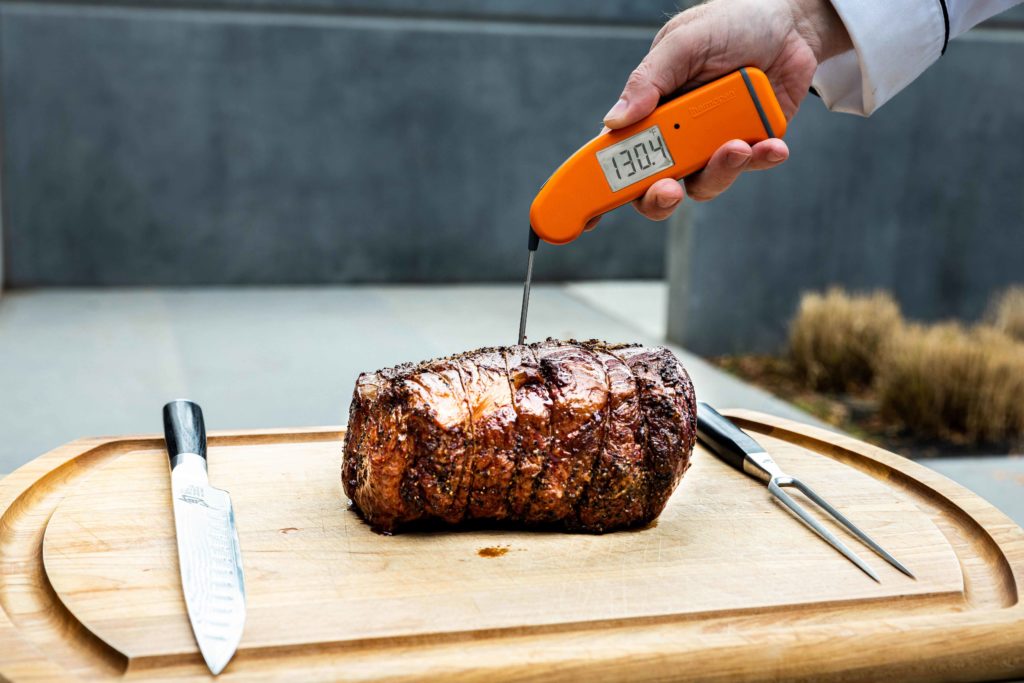
Step 7: Tent and Rest Your Prime Rib
Tent the roast loosely with foil and let it rest for 5–10 minutes before carving to let the temperature gradients normalize and the juices redistribute within the meat—after all, we’re trying to make the juiciest and most flavorful prime rib you’ve ever had. Remember, your roast will continue to rise by 5°F (3°C) as it rests. To see how much carryover there is, leave the probe in while it rests. You can use the carryover info next time you cook a similar roast to gauge your pull temp.
Step 8: Carve and Enjoy!
Last but not least: carve that hunk of meat! Slice it into juicy, tasty slabs that don’t need any jus to make them good.
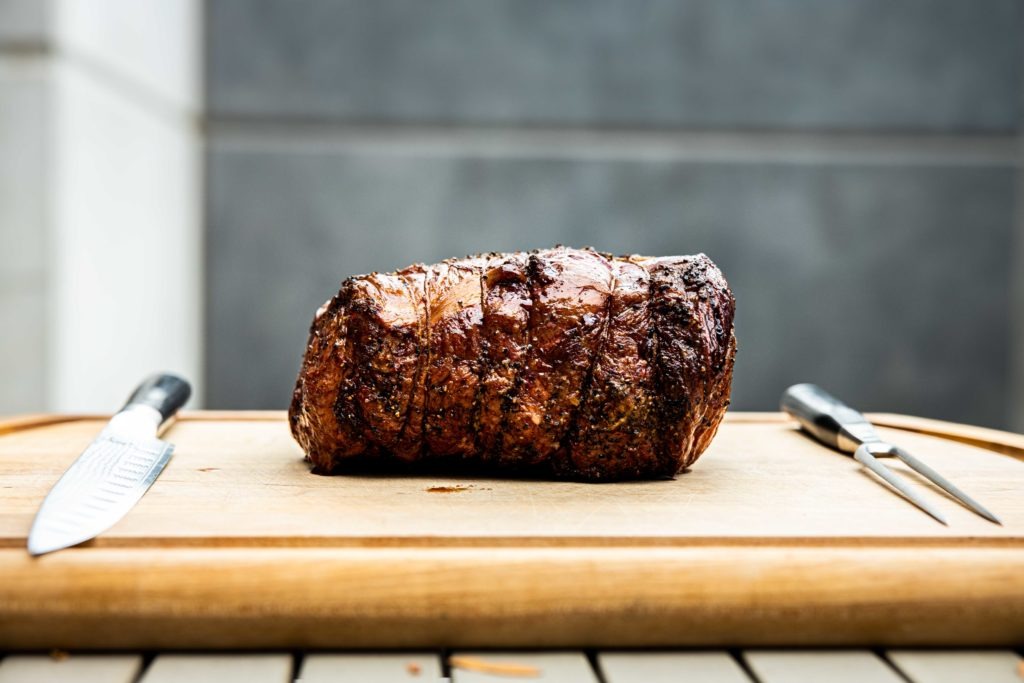
By using temperature control and thermal thinking to follow the three prime rib commandments above, you will achieve have a prime rib fit for a king…or your family and friends.
Merry Christmas from all of us here at ThermoWorks!
Shop now for products used in this post:
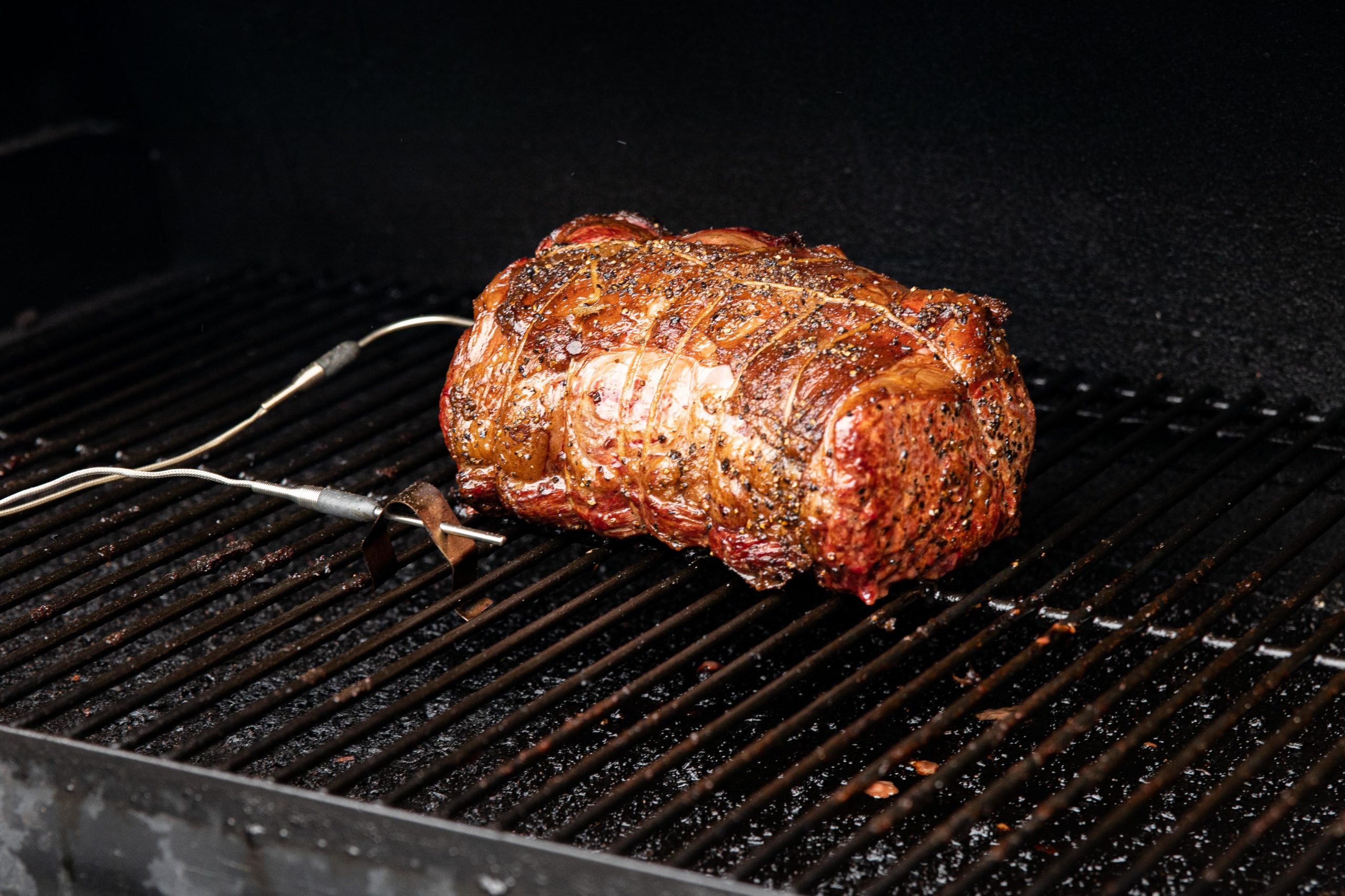
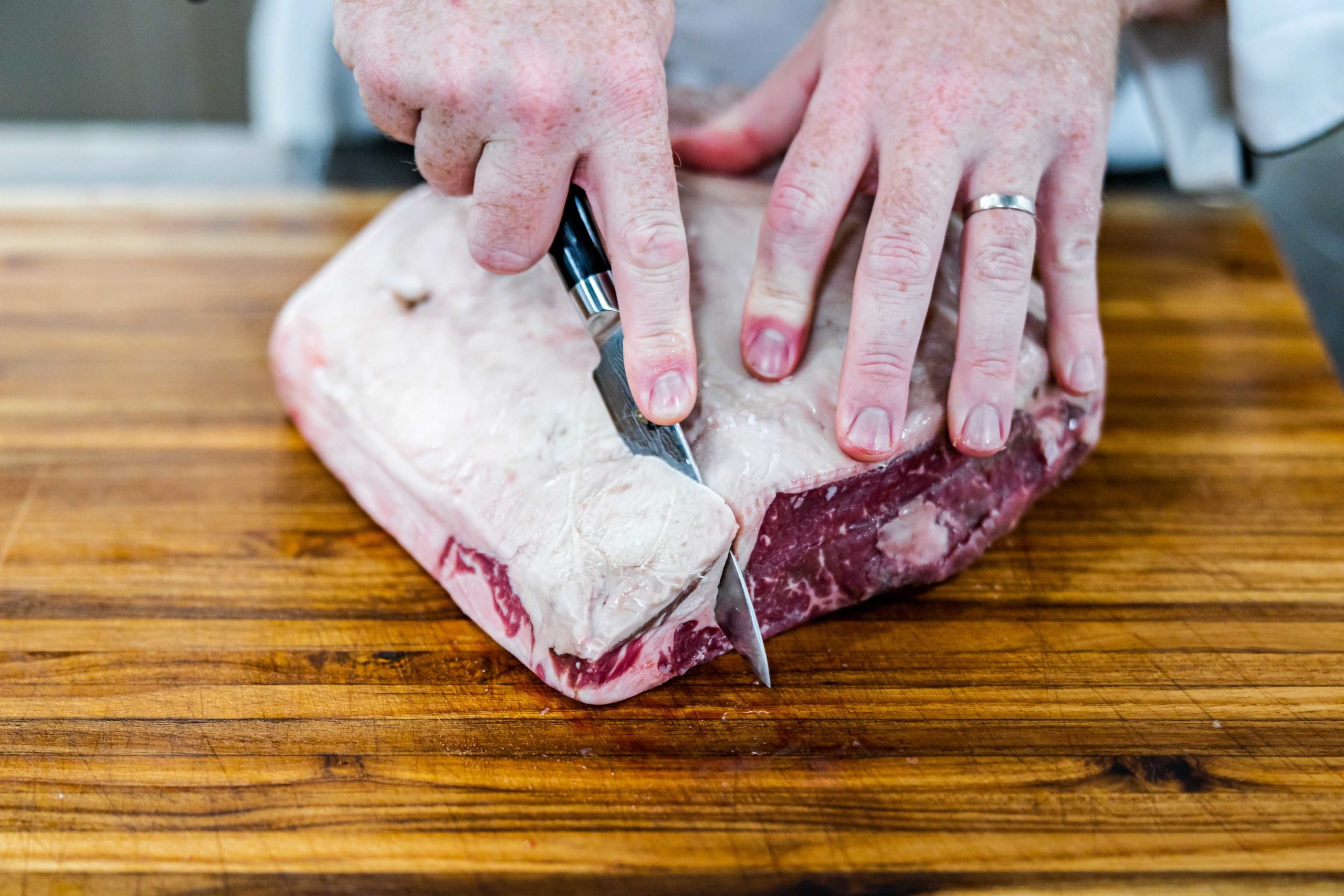
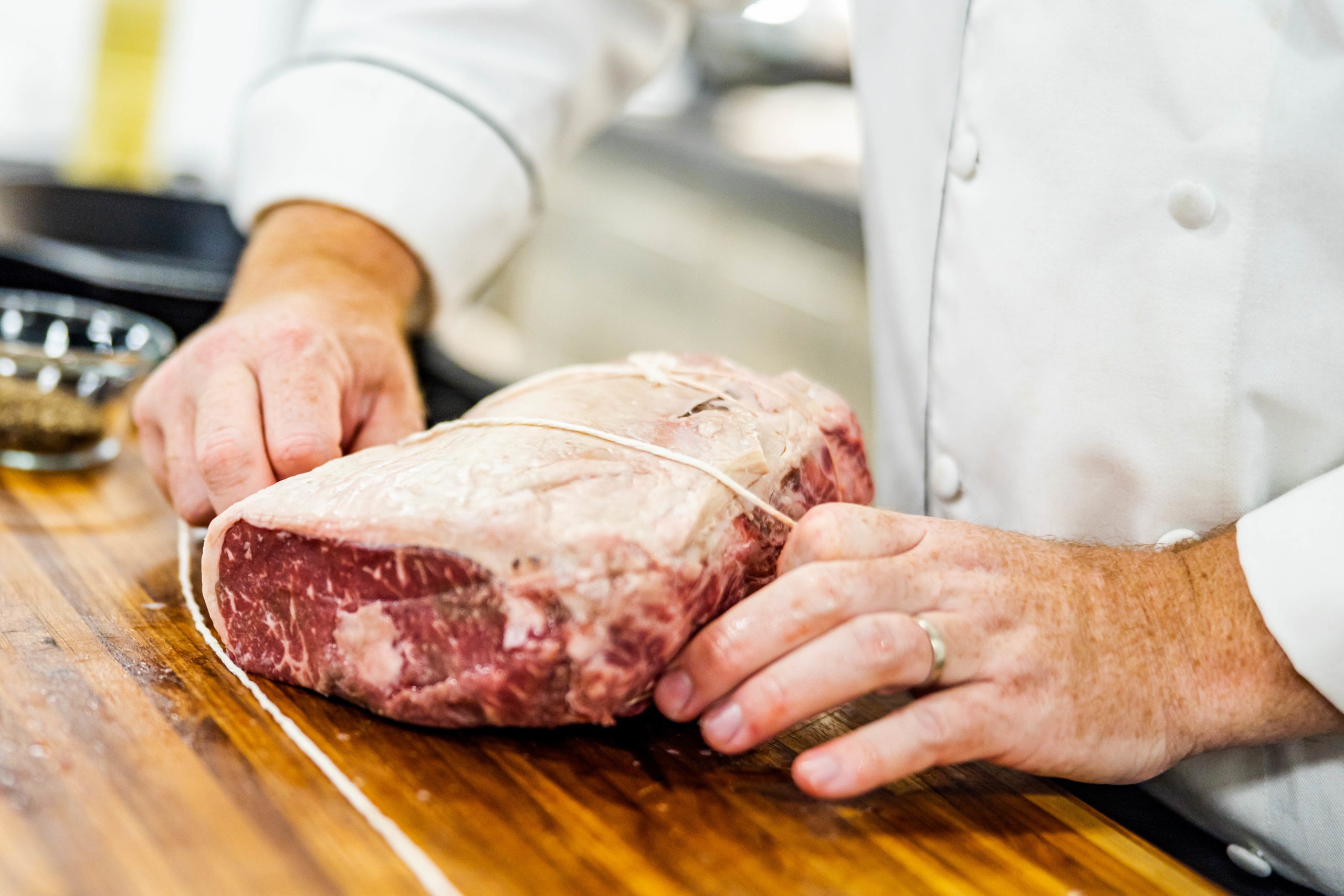
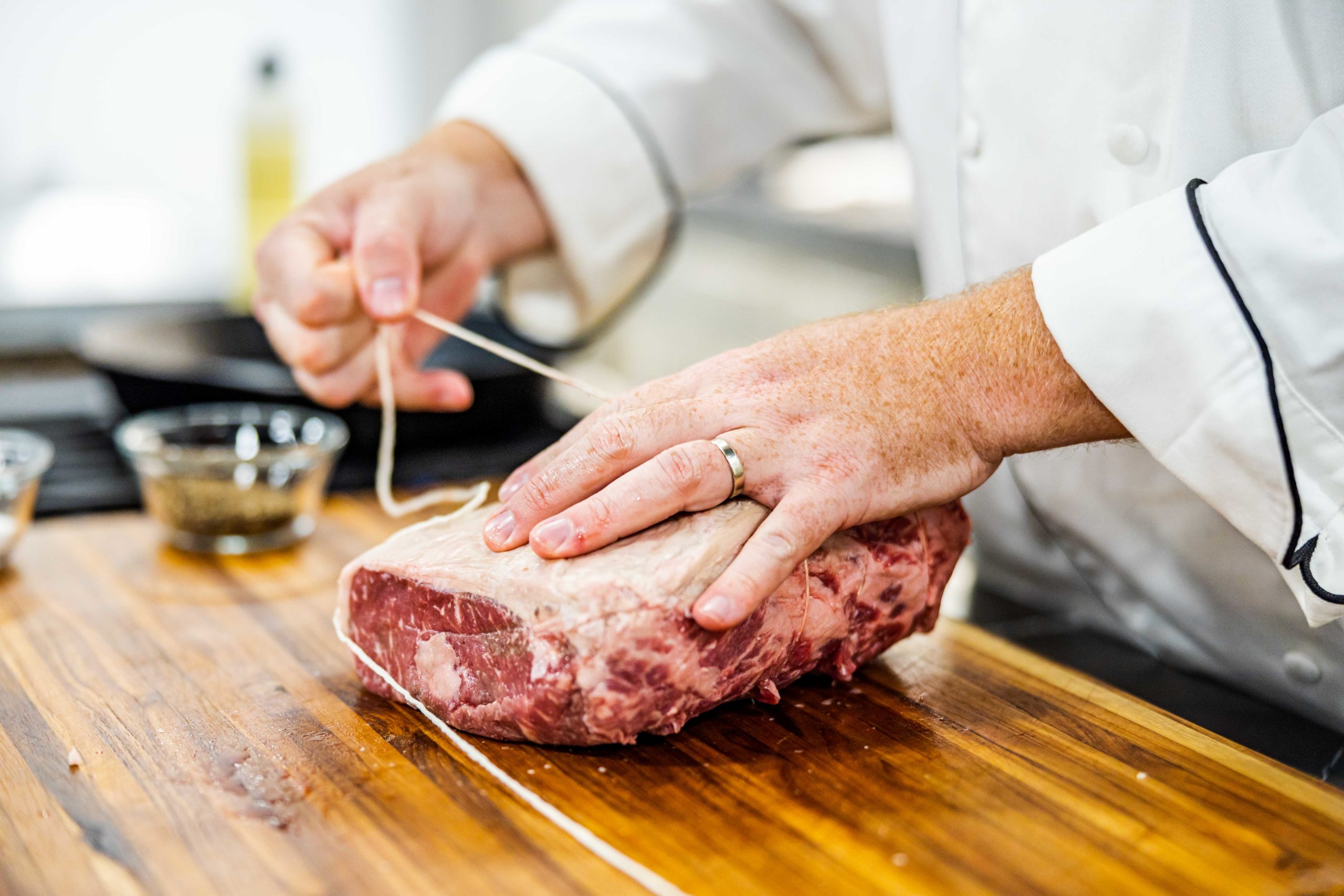
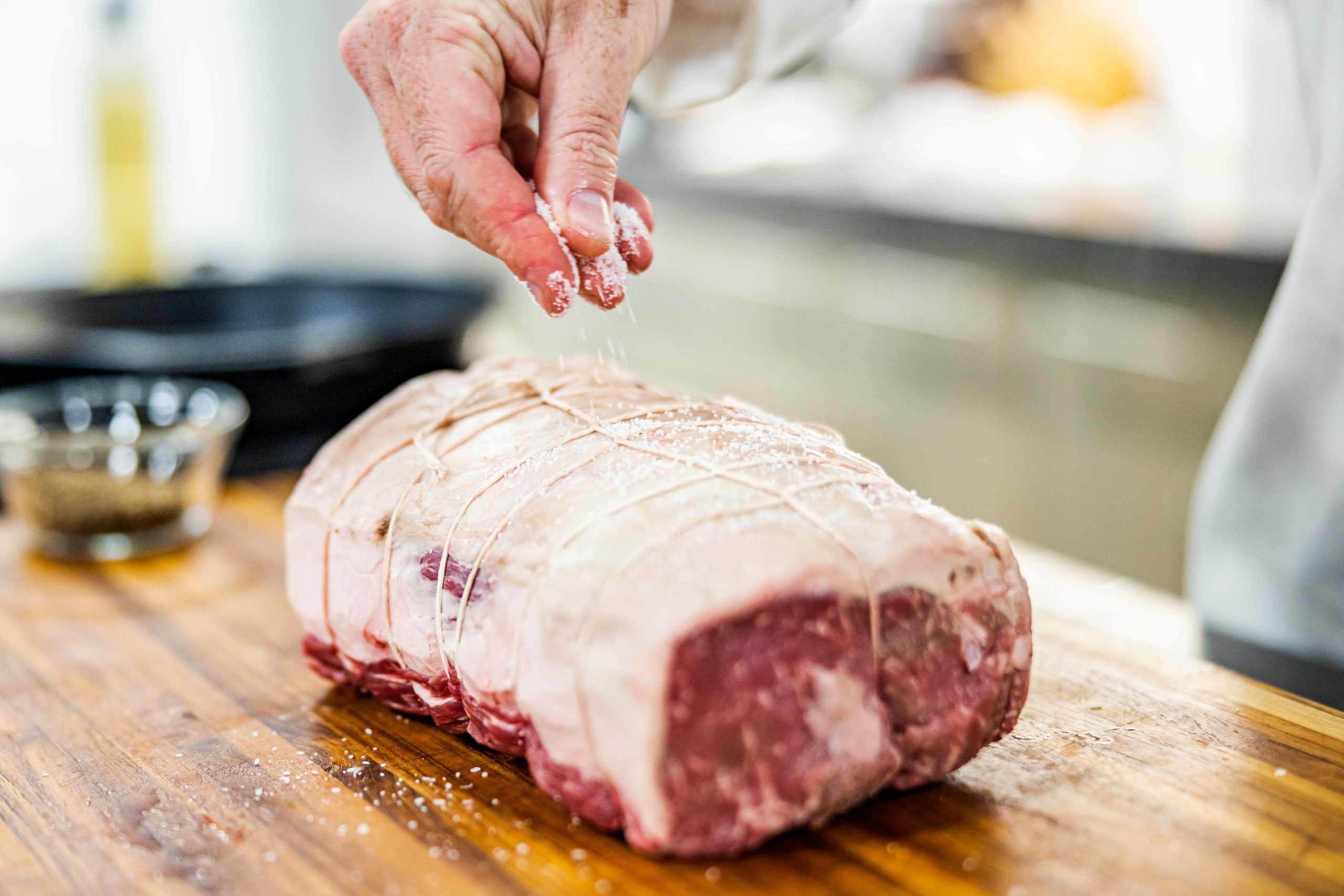
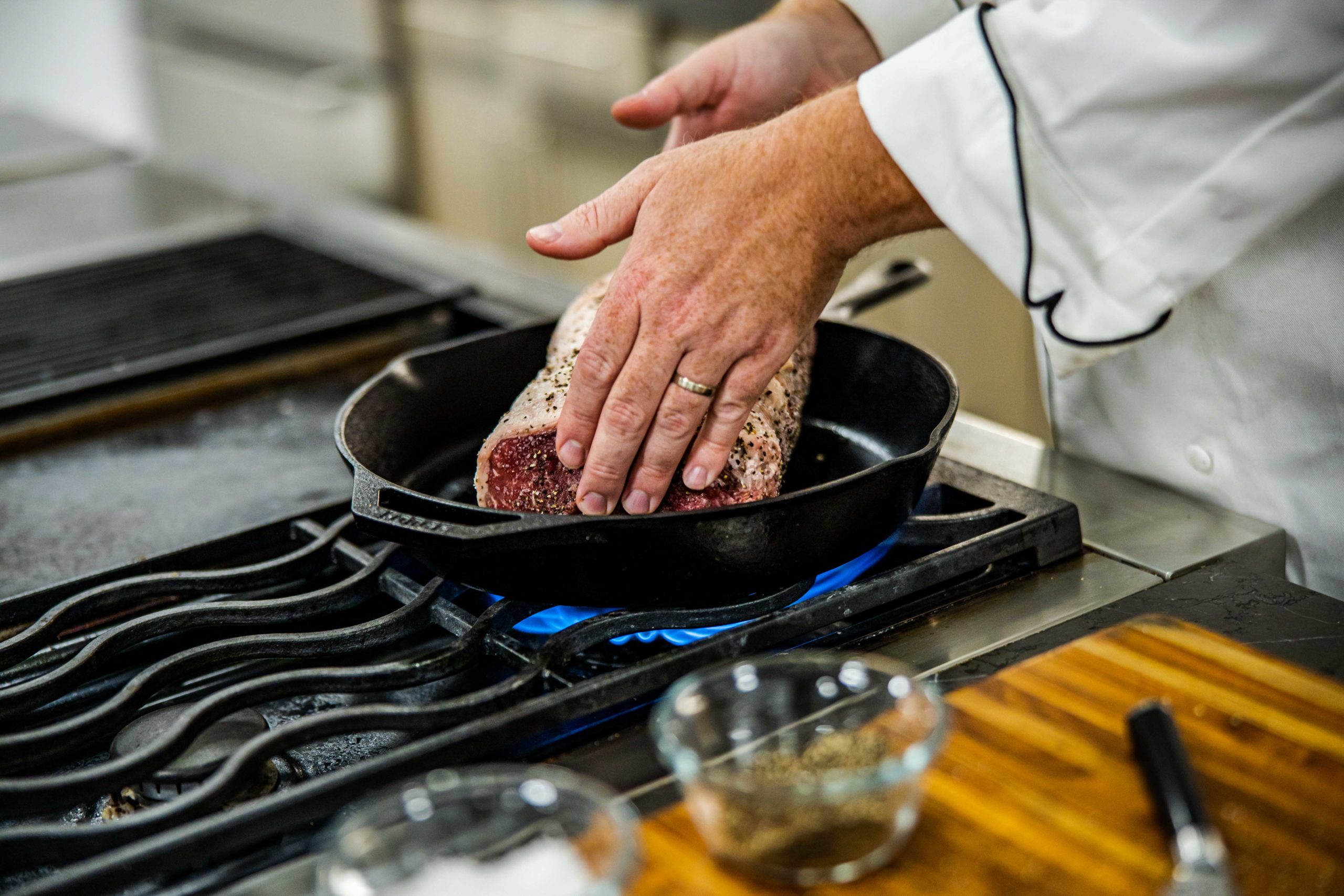

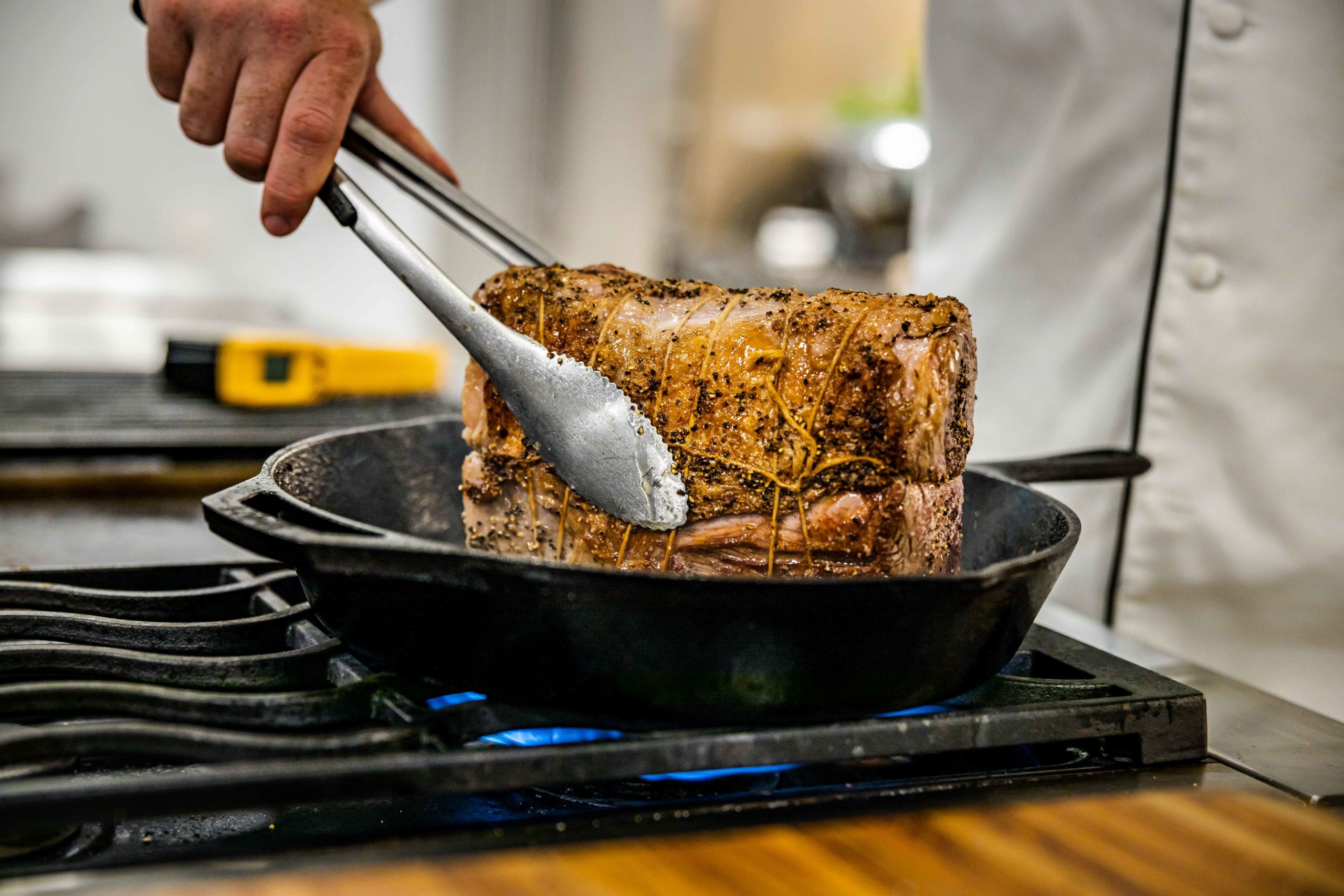
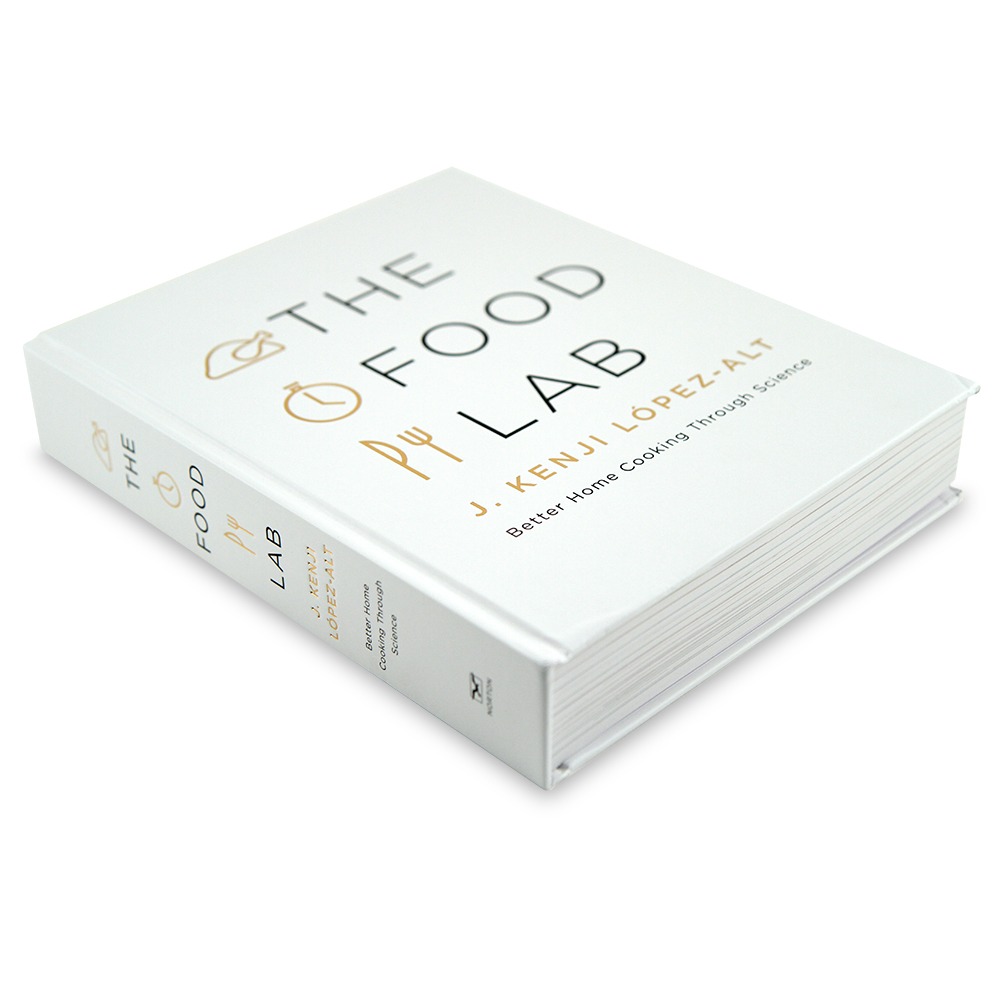



Bill Bishop says
Will Pecan & Hickory work as well? I do all my smoking using these woods.
Brady Paulich says
Bill, you should be just fine with either of those woods. Good luck!
RAY KOSI says
IS THE PRIME RIB PURCHASED WITH THE BONES OR CAN IT BE PURCHASED WITHOUT THE BONES. THANK YOU.
David says
How long did the roast stand outside the fridge and what was the starting may temp? Looks like you used a kamado, did you use wood chunks or just lump? Did you cut it off the ribs before seasoning then tie it back on, and did the ribs stay on during the final testing period after cooking?
Brady Paulich says
David, thanks for you questions. We took the prime rib out of the fridge and it went right into the smoker (Big Green Egg) We used a combination of Apple wood chunks and cherry wood chips. The prime rib was boneless, but it would be just as good with bones. It’s just whatever you like better. Good luck and let us know if you have anymore questions.
Brady Paulich says
The one we cooked was boneless. You can buy it either way. Good luck!
Brian Thompson says
Did you place the meat in the fridge covered or uncovered overnight?
Mike E says
Good advice on making sure the family is ready to eat on time. I ended up with a medium-well roast a couple of years ago because it rested too long.
For my Christmas Eve dinner I am considering placing the rib roast on an infrared rotisserie after it is finished on the smoker. Should I smoke it with the rotisserie spit rod in place so I don’t lose any juices putting it in after smoking or will it be fine?
Brady Paulich says
We didn’t cover ours, but you can totally cover yours and be just fine.
Brady Paulich says
We suggest smoking it with the spit rod in the roast. If you do smoke it without the spit rod, make sure you let it rest after the smoke before putting it in.
Richard says
All I can say is wow – it came off the smoker at ~110F and went right into the oven at 500F for the climb to 118F – after a 30 minute rest (final temp ~135F) we attacked the beast with much gusto – can’t say I’ve ever tasted anything so good – thanks to my ThermaQ and Thermapen I was able to track the temps and pull it off at exactly the right time. Couldn’t have asked for a better Christmas meal.
Kim says
Richard,
This is the kind of story we like to hear! Your rib roast sounds like it was amazing–wish we could have tried it 🙂
-Kim
Richard says
I started a 10 lb / 4 rib beast this morning at around 9am – it’s up to about 86 degrees right now and smelling wonderful – been cooking it at around 206F in a Pit Barrel and things seem to be progressing perfectly.
David P says
Do you have any suggestions on keeping the meat from scorching in the 500 degree oven? Mine kept wanting to make it’s own smoke in the oven. I kept the meat on the lowest rack and rotated it, but I still had to keep opening the oven to drop the temp.
It turned out great, looked like the picture, but I didn’t like the black specs.
Brady Paulich says
You could do one of two things.
1. Take it out of the oven earlier and let it rest longer.
2. Take it out of the smoker 120-125°F and cooking it for less time in the oven.
David Bowne says
I tried this yesterday for my NewYears Dinner. It was the best ever!!! You just can’t beat the big green egg, my ThermaQ, and Thermapen. The products from thermoworks are great and the cooking tips are an added bonus. Keep up the good work in 2016. D
Kim says
David,
So glad to hear we were able to help a little with your New Year’s dinner! Best wishes for the new year.
-Kim
Jack Sippel says
I used this article to smoke a 6lb boneless Prime Rib for Valentines Day. It took about 4 and 1/2 hours in my gas grill at 190-210 to reach 110 degrees internal from a starting internal temp of 45 and a surface temp of about 50 degrees (left out of the fridge for 2.5 hours). I turned it once during smoking.
The sear in the 500 degree oven took about 10 minutes to reach 117 (yes, it did set off the smoke alarm). We tented it and then carved when the internal reached 130 (about 25 minutes).
Sadly, I had a pretty good sized (3/4 to 1 inch) layer of dark brown on one side. I suspect that it is because I didn’t turn the meet during searing as the article suggested, but I lost track of which side was up when. Be sure to do that when you attempt this.
Other than the slightly overcooked edge, the method worked great and the meat was tasty! I may shoot for a slightly higher temp to take it off the smoker and less sear time, just due to personal preference.
Thanks for all the great suggestions and recipes. They are one of the things that makes this site so great!.
Kim says
Jack,
We appreciate you sharing with us how your cook went! It’s always helpful to learn from others’ experiences.
Thanks!
-Kim
Barry Buckser says
Made the Rib Roast today. Probably the best piece of meat that my family has ever tasted. Followed instructions exactly and used an electric smoker with the water bath for moisture. Smoked the meat for the first couple of hours until transferred to oven. Smoker temp at 210 degrees, 5.7 lb Standing Rib Roast took 3 hours to come to 110 degrees. 20 minutes on the counter covered by foil brought the temp to 118 degrees and around ten minutes in the 500 degree oven brought the meat to 125 Degrees and a perfect color. We eat it about twenty minutes later at 132 degrees. The crust was fantastic and the meat rare from edge to edge. The dots worked as advertised and the big numbers made reading the temp easy. Next time I will reduce the rub mix by half since it was way to much even when heavily applied.
Kim says
Barry,
I’m so glad the DOTS performed well for you, and it sounds like your roast was amazing!
Thanks,
-Kim
Pete says
Could you not just crank up the heat to 500 on the smoker to finish it up there? Doesn’t usually take long to bring the BGE up to higher heats.
Kim says
Pete,
Yes, you could totally finish it in the BGE. Just make sure you take the meat out while you heat it up. Another reason we finished in the oven is because of the radiant heat from the oven. You won’t get that from the BGE which means the crust might not be as crisp.
lowandslow says
These days some 7-8 years later Kenji is a big proponent of “the reverse sear” for anyone that does not own a smoker.We have used this method in the oven and still use “smoke as well as thermapen”. Delicious.